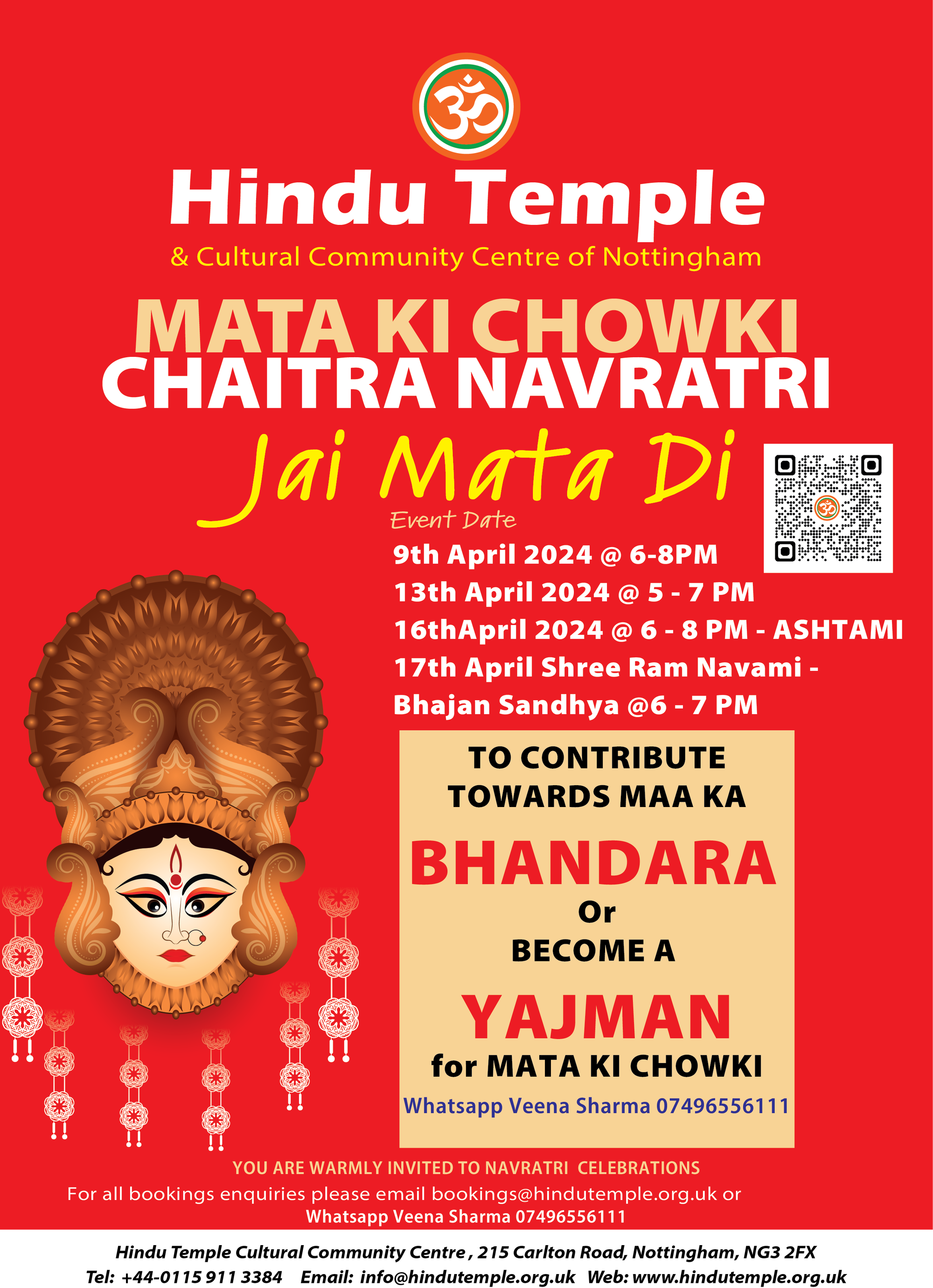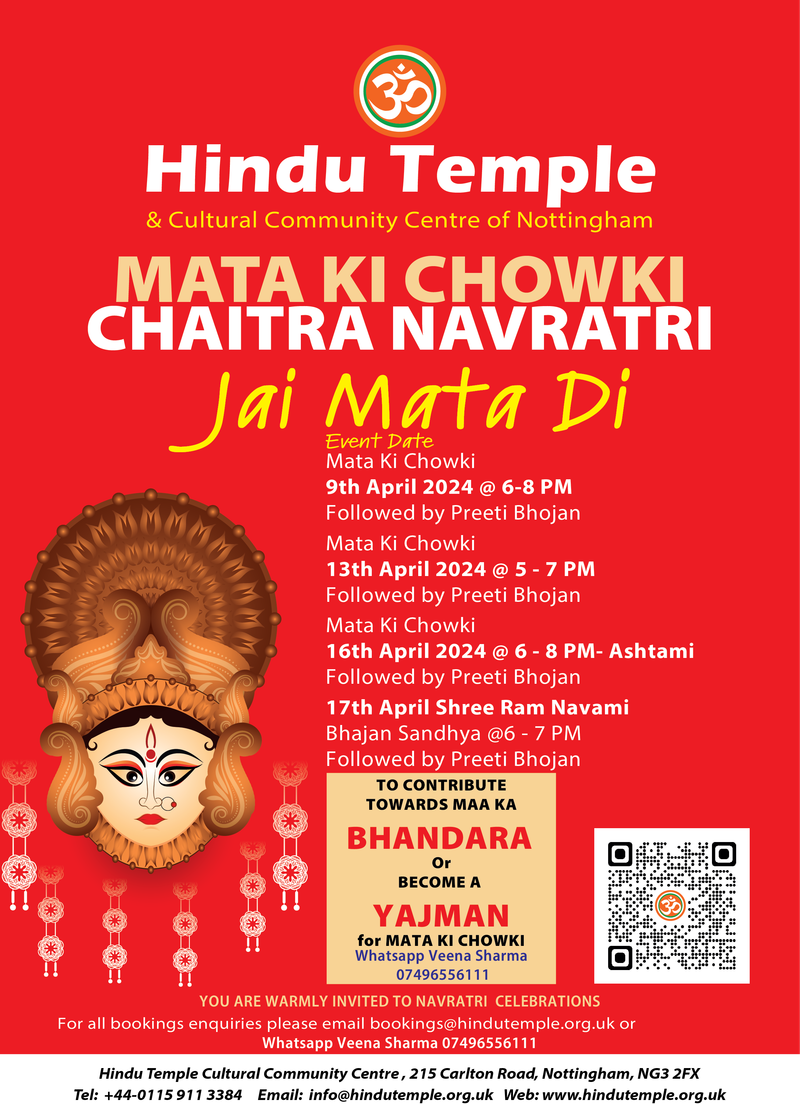Navratri, derived from Sanskrit words "Nav" meaning nine and "Ratri" meaning nights, is a Hindu festival celebrated over nine nights and ten days. It holds significant religious and cultural importance in Hinduism, particularly within the framework of Sanatana Dharma In Sanatana Dharma, Navratri is dedicated to the worship of the divine feminine energy, often personified as Goddess Durga, Devi, or Shakti. This festival symbolizes the triumph of good over evil, as it commemorates the victory of Goddess Durga over the demon Mahishasura, symbolizing the victory of righteousness over evil forces. Navratri is observed twice a year: Chaitra Navratri, which falls in the Hindu lunar month of Chaitra (usually in March-April), and Sharad Navratri, which occurs in the lunar month of Ashvin (usually in September-October). Among these, Sharad Navratri is the most widely celebrated. During Navratri, devotees observe fasting, perform special prayers, and participate in various cultural activities such as dance, music, and religious processions. Each day of Navratri is associated with the worship of different forms of Goddess Durga, known as Navadurga or the nine forms of Durga. These forms include Shailaputri, Brahmacharini, Chandraghanta, Kushmanda, Skandamata, Katyayani, Kalaratri, Mahagauri, and Siddhidatri. Navratri culminates with the celebration of Vijayadashami or Dussehra, marking the triumph of Lord Rama over the demon king Ravana, as narrated in the epic Ramayana. In some regions, Dussehra also commemorates the victory of Goddess Durga over Mahishasura. In Sanatana Dharma, Navratri is not only a religious festival but also a time for spiritual reflection, self-discipline, and renewal of faith. It brings communities together, fostering a sense of unity, devotion, and cultural heritage among Hindus worldwide.
- Date: 09/04/2024 18:00
- Location 215 Carlton Road, Nottingham, UK (Map)
- More Info: Hindu Temple Nottingham
Description

Durga worshipped on those days:
Day 1: Pratipada (Shailaputri Puja):
- On the first day, Goddess Shailaputri is worshipped. She is depicted as riding a bull and is associated with strength and courage. Devotees pray to her for good health, prosperity, and success.
Day 2: Dwitiya (Brahmacharini Puja):
- The second day is dedicated to Goddess Brahmacharini, symbolizing penance and devotion. She is depicted as walking barefoot and carrying a rudraksha mala and kamandalu (water pot). Devotees seek her blessings for spiritual growth and enlightenment.
Day 3: Tritiya (Chandraghanta Puja):
- Goddess Chandraghanta is worshipped on the third day. She is depicted with a half-moon on her forehead and ten arms, riding a tiger. Chandraghanta represents peace, serenity, and bravery. Devotees pray to her for protection from evil and for peace and prosperity.
Day 4: Chaturthi (Kushmanda Puja):
- Goddess Kushmanda, the creator of the universe, is worshipped on the fourth day. She is depicted with eight arms and riding a lion. Devotees seek her blessings for strength, vitality, and prosperity.
Day 5: Panchami (Skandamata Puja):
- The fifth day is dedicated to Goddess Skandamata, the mother of Lord Skanda (Kartikeya). She is depicted holding her son Skanda in her lap. Devotees pray to her for the well-being of their children and family harmony.
Day 6: Shashti (Katyayani Puja):
- Goddess Katyayani is worshipped on the sixth day. She is depicted with four arms, riding a lion, and carrying weapons. Katyayani is revered as a symbol of courage and valor. Devotees seek her blessings for courage, protection, and victory over obstacles.
Day 7: Saptami (Kalaratri Puja):
- The seventh day is dedicated to Goddess Kalaratri, the fiercest form of Goddess Durga. She is depicted with a dark complexion, disheveled hair, and a fearless posture. Devotees pray to her for protection from evil forces and for the removal of negative energies.
Day 8: Ashtami (Mahagauri Puja):
- Goddess Mahagauri is worshipped on the eighth day. She is depicted as fair-complexioned and radiating peace and compassion. Mahagauri symbolizes purity and forgiveness. Devotees seek her blessings for spiritual purification and inner strength.
Day 9: Navami (Siddhidatri Puja):
- The ninth day is dedicated to Goddess Siddhidatri, the bestower of supernatural powers and blessings. She is depicted seated on a lotus and holding a discus, conch, mace, and lotus. Devotees pray to her for spiritual enlightenment, prosperity, and fulfillment of desires.
Each day of Navratri holds its own significance and offers devotees an opportunity to connect with different aspects of divine feminine energy, seeking blessings for various aspects of life and spirituality.



